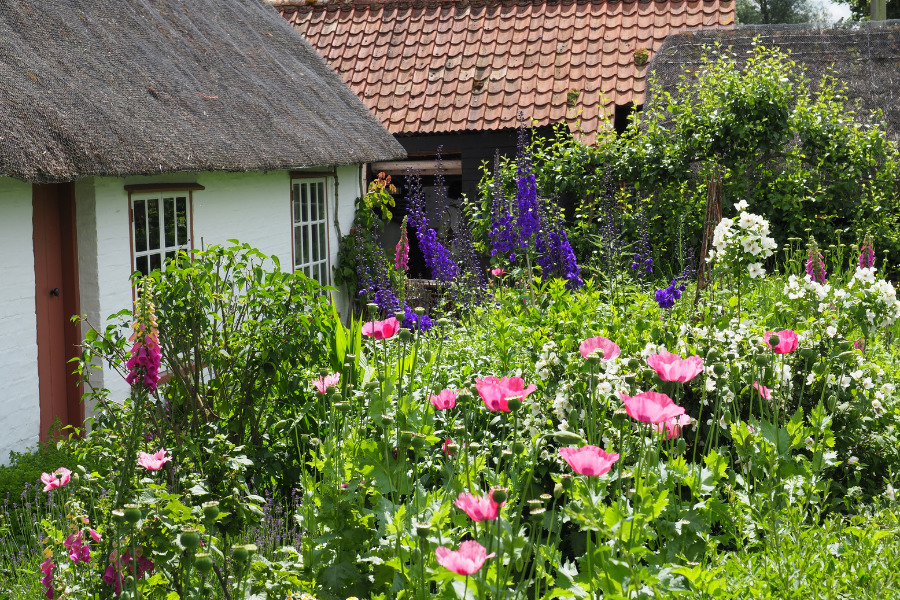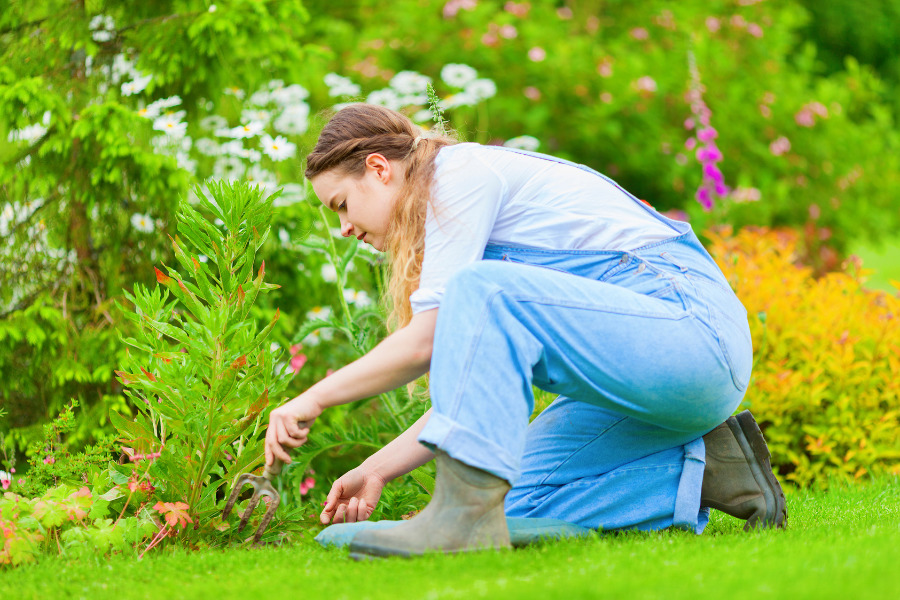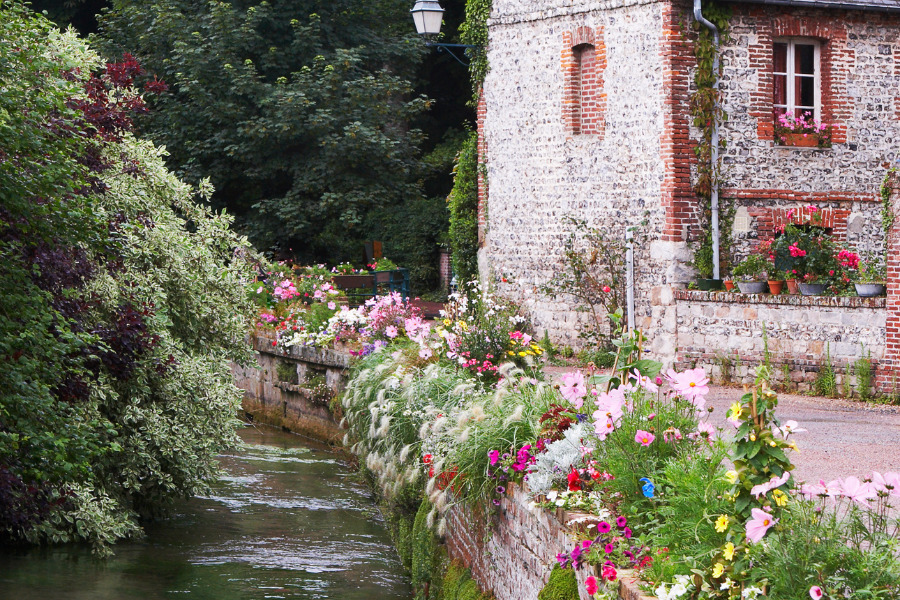
For centuries, people have loved and popularized cottage gardens as a gardening style. These informal and romantic gardens feature colorful flowers, lush foliage, and a charmingly rustic feel. But what exactly is a cottage garden, and why should you consider creating one?
In this post, we’ll explore cottage gardening history and the unique design principles behind it. We’ll discuss the benefits and challenges of creating a cottage garden. Additionally, we’ll offer tips for choosing plants, designing your garden, and maintaining its beauty and health.
A cottage garden is a wonderful addition for both seasoned gardeners and beginners. So let’s dive in and explore the world of cottage gardening together!
Cottage Gardening: Design

Designing a cottage garden focuses on achieving a romantic, informal, and naturalistic appearance. Additionally, the goal is to make it seem as if the garden has evolved over time. Here are some key steps to consider when designing your own cottage garden:
Cottage Gardening: Choosing a Location
The first step in designing a cottage garden is to choose the right location. Moreover, cottage gardens often have a naturalistic layout, with plants arranged in irregular clumps or drifts. Look for a spot with good soil, plenty of sun, and some natural features like trees or a hedge to help define the space.
Cottage Gardening: Selecting Plants
When it comes to choosing plants for a cottage garden, the key is to create a sense of abundance and diversity. Cottage gardens feature a mix of annuals, perennials, shrubs, and trees, arranged informally and relaxed. Some popular plants for a cottage garden include:
- Roses
- Peonies
- Delphiniums
- Foxgloves
- Lavender
- Hollyhocks
- Hydrangeas
- Clematis
- Sweet peas
- Sunflowers
Considerations for Layout and Design
Once you’ve selected your plants, it’s time to think about how to arrange them for maximum impact. Cottage gardens often have a naturalistic layout, with plants arranged in irregular clumps or drifts. You can also use hardscaping elements like pathways, trellises, or arches to create structure and define different areas of the garden.
Cottage Gardening: Tips for Creating a Cohesive Look
While cottage gardens are known for their relaxed and informal look, it’s still important to create a sense of cohesion and harmony. Here are some tips for achieving a cohesive look in your cottage garden:
- Choose a color palette: Select a few key colors that you want to dominate your garden, and use them consistently throughout. For example, you might choose shades of pink, purple, and blue for a romantic and feminine feel.
- Mix and match textures: Cottage gardens often feature a mix of fine and coarse textures, such as the delicate petals of a rose next to the rough bark of a tree.
- Vary plant heights: To create visual interest, mix plants of different heights and sizes throughout your garden.
By following these guidelines, you can create a beautiful and natural-looking cottage garden that will delight and enchant you for years to come.
Cottage Gardening: Popular Plants
Cottage gardens are known for their abundant and diverse plantings, with a mix of annuals, perennials, shrubs, and trees. Here are some of the most popular plants for a cottage garden:
Roses

No cottage garden is complete without roses! Choose from a variety of colors, sizes, and growth habits to create a stunning display. Some popular varieties for a cottage garden include climbing roses, shrub roses, and old-fashioned roses like ‘David Austin’ roses.
Peonies

Peonies, another classic cottage garden plant, boast large, showy blooms and sweet fragrance. They come in a range of colors, including pink, white, and red, and prefer full sun to partial shade.
Delphiniums

Delphiniums are tall, stately plants that add a touch of drama to a cottage garden. They produce spikes of blue, purple, pink, or white flowers in early to mid-summer and prefer full sun.
Foxgloves

Foxgloves are a cottage garden favorite for their tall, spiky flower stalks and bell-shaped blooms. They come in a range of colors, including pink, purple, and white, and prefer partial shade.
Lavender

Lavender is a classic cottage garden plant, known for its fragrant foliage and delicate flowers. It prefers full sun and well-drained soil, and can be used as a border plant or planted in mass for a stunning effect.
Hollyhocks

Hollyhocks are tall, stately plants that add vertical interest to a cottage garden. They come in a range of colors, including pink, red, yellow, and white, and prefer full sun.
Hydrangeas

Additionally, hydrangeas are a popular choice for a cottage garden, with their large, showy blooms and lush foliage. They come in a range of colors, including blue, pink, and white, and prefer partial shade.
Clematis

Clematis is a climbing vine that can be trained up a trellis, fence, or arbor to add height and interest to a cottage garden. They come in a range of colors, including pink, purple, red, and white, and prefer full sun to partial shade.
Sweet peas

Sweet peas are a fragrant and delicate plant that can be used as a border or planted in mass for a stunning effect. They come in a range of colors, including pink, purple, and white, and prefer full sun to partial shade.
Sunflowers

Sunflowers are a cheerful and colorful addition to a cottage garden, with their bright yellow petals and dark centers. These plants thrive in full sun and well-drained soil. Use them as border plants or plant them en masse for a stunning effect.
By choosing a mix of these popular plants, you can create a lush and colorful cottage garden that will delight you and your visitors for years to come.
Cottage Gardening: Maintenance and Care

While cottage gardens are often thought of as low-maintenance, they do require some care to keep them looking their best. Here are some tips for maintaining your cottage garden:
Basic Maintenance Requirements
- Watering: Regularly water your plants, especially in dry spells, to maintain moist but not waterlogged soil.
- Mulching: Add a layer of organic mulch like shredded leaves or straw around plants to retain moisture and suppress weeds.
- Deadheading: Remove spent flowers, encouraging new blooms and preventing the plant from going to seed.
- Pruning: Prune plants as needed for maintaining shape and promoting healthy growth.
Tips for Keeping Plants Healthy and Thriving
- Fertilizing: Apply a balanced, slow-release fertilizer once or twice a year to provide essential nutrients for your plants.
- Soil health: Maintain healthy soil by adding compost or organic matter annually, and avoid compacting the soil by walking on it or using heavy equipment.
- Pest control: Monitor your plants regularly for pests and diseases, and treat them promptly with organic or chemical controls as needed.
- Sunlight: Ensure your plants are getting the right amount of sunlight for their specific needs. Some plants, like roses, require full sun, while others, like hostas, prefer shade.
Dealing with Common Problems
- Weeds: Keep weeds under control by pulling them by hand or using organic or chemical weed controls.
- Pests: Monitor your plants regularly for signs of pests, such as aphids or spider mites, and treat them promptly with organic or chemical controls as needed.
- Disease: Watch for signs of disease, such as yellowing or spotted leaves, and treat them promptly with organic or chemical controls as needed.
By following these tips and keeping up with regular maintenance, you can keep your cottage garden looking healthy and beautiful year-round.
Advantages and Challenges of Cottage Gardening

Cottage gardening has many advantages, but it also comes with some challenges. Here are some of the pros and cons of creating a cottage garden:
Cottage Gardening: Benefits
- Beauty: Cottage gardens are known for their lush, colorful, and romantic look, which can be a beautiful addition to any home.
- Diversity: Cottage gardens feature a mix of different plant types, which can attract a variety of wildlife, including birds, butterflies, and bees.
- Low-maintenance: While some upkeep is required, cottage gardens are generally considered low-maintenance compared to more formal garden styles.
- Self-sustaining: Cottage gardens are often designed to be self-sustaining, with plants that readily reseed themselves and spread to fill empty spaces.
Cottage Gardening: Maintenance Challenges
- Weeds: With so many plants and a naturalistic layout, cottage gardens can be more prone to weeds than other garden styles.
- Disease: The dense plantings of a cottage garden can create conditions that are favorable for the development and spread of plant diseases.
- Maintenance: While cottage gardens are generally low-maintenance, they do require some upkeep, such as deadheading, pruning, and watering.
- Design: The naturalistic and informal look of a cottage garden can be challenging to achieve, especially for those who are used to more formal garden styles.
Despite the challenges, many gardeners find that the benefits of a cottage garden far outweigh any downsides. With careful planning and attention, a cottage garden can be a beautiful and rewarding addition to any home.
Examples of Cottage Gardens
Looking for inspiration for your own cottage garden? Here are some examples of successful cottage gardens to inspire you:
Great Dixter

Great Dixter is a famous cottage garden located in East Sussex, England. Christopher Lloyd, a gardener and writer, crafted this beloved cottage garden in the early 20th century. Known for its naturalistic layout and abundant plantings, the garden showcases a vibrant mix of flowers, shrubs, and trees.
The English Garden

The English Garden is another famous cottage garden, located in Kent, England. Gertrude Jekyll, a designer, established this iconic cottage garden in the late 19th century. Showcasing a blend of formal and informal elements, the garden features well-defined borders, naturalistic plantings, and a focus on color and texture.
Tasha Tudor’s Garden
Tasha Tudor was a beloved children’s book author and illustrator who was also an avid gardener. Her garden, located in Vermont, USA, was a quintessential example of the cottage garden style, with a mix of flowers, vegetables, herbs, and fruit trees arranged in a naturalistic and whimsical way. The garden was known for its quaint, rustic look and its emphasis on self-sufficiency.
The Sissinghurst Castle Garden

The Sissinghurst Castle Garden is a world-renowned cottage garden located in Kent, England. Vita Sackville-West and her husband Harold Nicolson created this cherished cottage garden in the 1930s. Renowned for its formal layout, featuring garden rooms that seamlessly connect, the garden also boasts lush plantings and a romantic ambiance.
These gardens are just a few examples of the many beautiful and inspiring cottage gardens that exist around the world. By studying these gardens and taking inspiration from their design and plantings, you can create a unique and beautiful cottage garden of your own.

Creating a cottage garden can be a wonderful way to add beauty, diversity, and naturalistic charm to your home. With a mix of flowers, shrubs, and trees arranged in an informal and romantic way, a cottage garden can create a sense of abundance and relaxation that is hard to achieve with more formal garden styles.
By following the design principles and maintenance tips outlined in this post, you can create a stunning and low-maintenance cottage garden that will delight you and your visitors for years to come. Whether you’re a seasoned gardener or a beginner just starting out, a cottage garden is a wonderful way to connect with nature and create a beautiful outdoor space that reflects your personality and style.
So why not give cottage gardening a try? With a little patience, creativity, and a love of the natural world, you can create a garden that is truly one-of-a-kind and uniquely your own.


